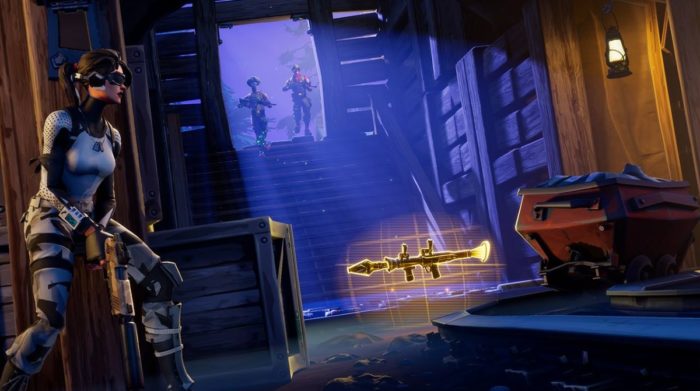Battle royale fever is highly infectious, it seems, and continues to spread like wildfire. Last week, it was announced that Epic’s latest game smashed past 45 million active users, and, at one point, over two million concurrent players were duking it out on the game’s whimsically animated island locale. Especially considering that it’s only been out four months, those are truly astonishing numbers, even for a free-to-play multi-platform title. Of course, in the wake of PUBG’s even more ludicrous figures last year, and riding the battle royale wave that is clearly the zeitgeist of multiplayer gaming right now, it’s easy to take them for granted. But make no mistake, the popularity of both games is reaching totally bonkers levels of interest.
Fortnite Battle Royale continues to fascinate on a deeper level, though. Has there ever been a greater comeback story in gaming? It’s risen to ascendancy over pretty much every other multiplayer shooter in the world despite the lukewarm critical reception of its original PvE experience. The turnaround has been impressive to behold. Few times will you ever see a developer scramble so tirelessly to issue meaningful updates and changes in such a short time. With each passing month, Fortnite Battle Royale feels evermore the complete package.
In fact, Epic’s latest reports of Fortnite’s surging player base arrives after an enormous new patch was added to the game, completely overhauling its aesthetic and adding substantial new areas. It follows a string of quality of life updates that have improved its lobby area, rebalanced and added weapons, as well as a clever new progression system. The game just keeps iterating and improving, and players are understandably loving it.

This is where the similar upward trajectories of PUBG and Fortnite Battle Royale differ somewhat. PUBG has enjoyed its own flurry of support from Bluehole Studios, but a year after its Early Access launch, it still feels very rudimentary. It’s floaty to control, cumbersome to inventory manage, and crash-prone; the polar opposite of Fortnite Battle Royale’s level of polish, which already feels like an experience ready for full release. As a result, in an outcome that is surely contrary to many people’s expectations, Fortnite is a free-to-play experience with much more refinement than the rival – now a premium $40 game – from which it took inspiration. Ironically, it’s also free of loot boxes and invasive advertisements, too.
Not that any of that has impacted on PUBG’s commercial performance or active player count, though. It remains the definitive battle royale experience for an astronomical number of players, and there’s little doubt that what it does right it does extremely well. The point is that while both games continue to perform superbly, one feels like its getting on with getting on a little more purposefully. PUBG might be the world-beating, genre-defining, seminal battle royale experience, but it’s looking increasingly like an amateur effort next to the competition. Particularly on Xbox One, PUBG’s wobbly frame rate and control issues just don’t feel ready for console. Dare I say it, PUBG looks much more like a mod rather than a full game. The irony continues, then…
Conversely, Epic is finally reaping the rewards of Fortnite’s five-year development cycle. Regardless of whether you think its shooting mechanics are any good, its building systems add to the experience, or whether its graphics are a good fit for the experience, the game runs like clockwork for the most part. It’s butter smooth, has few server issues, and generally feels like a complete package. Moreover, Epic is building a great deal of goodwill with its community, and that’s surely helping to win more of the mindshare in the process. The developer is making all the right moves: speaking to its fans regularly, listening to feedback, taking action against cheaters, and never being afraid to experiment with new ideas.
Of course, Fortnite’s free-to-play design is at the heart of its success. But let me tell you, hop on any server and you’ll notice a significant portion of players have invested in cosmetic upgrades – none of which are cheap, by the way. Apparently, nobody has a problem with paying money to enjoy a quality product.













Updated: Mar 26, 2018 09:22 am